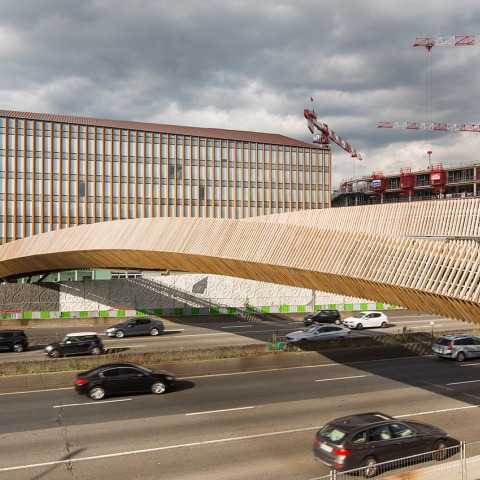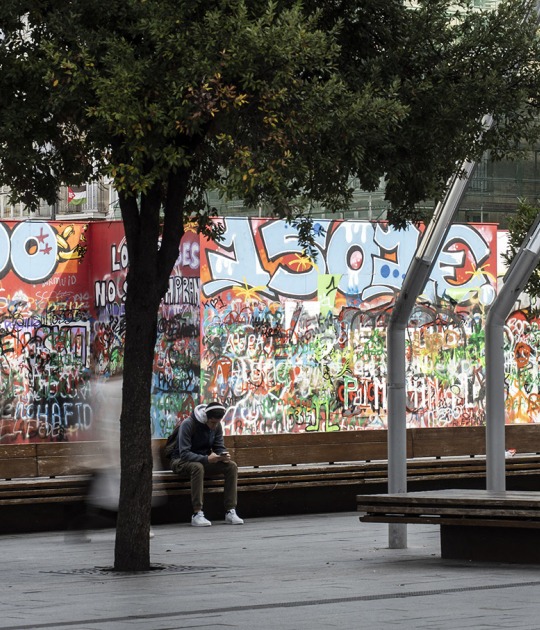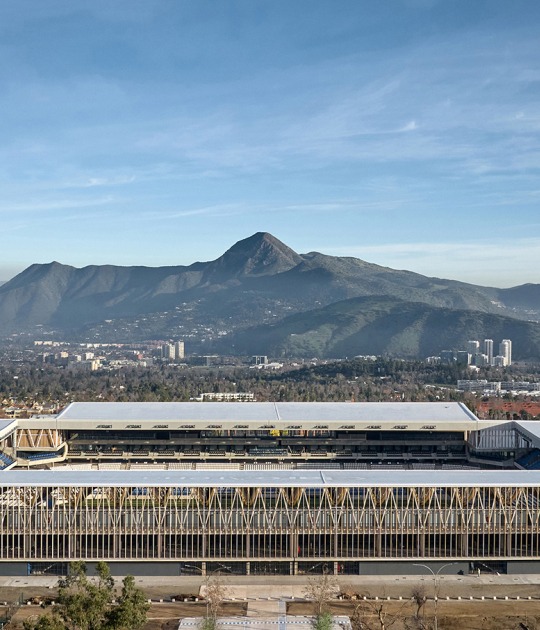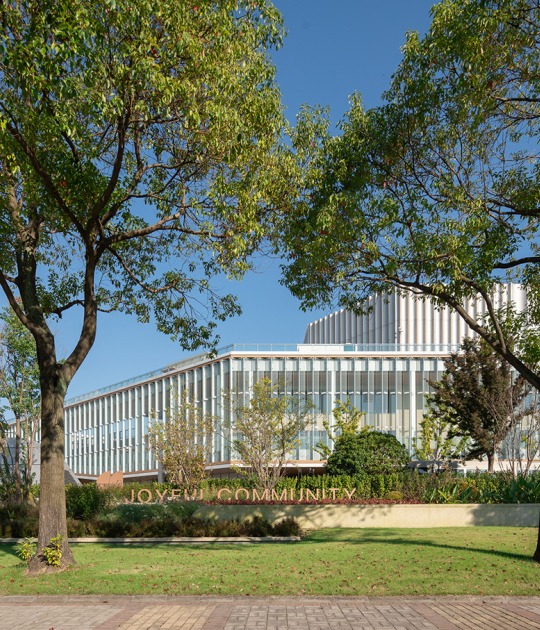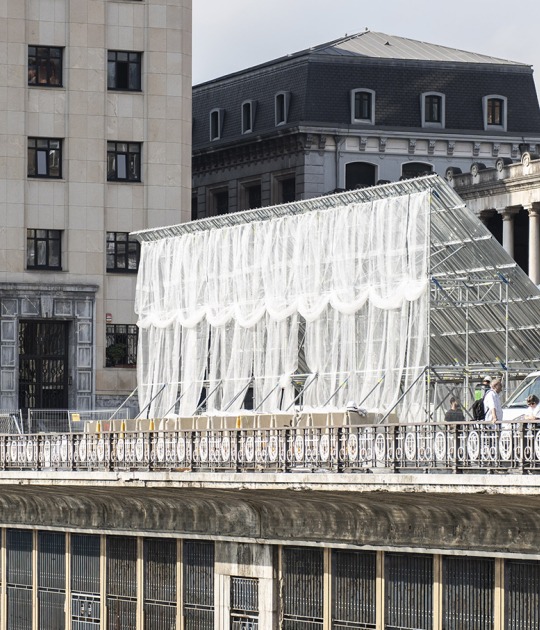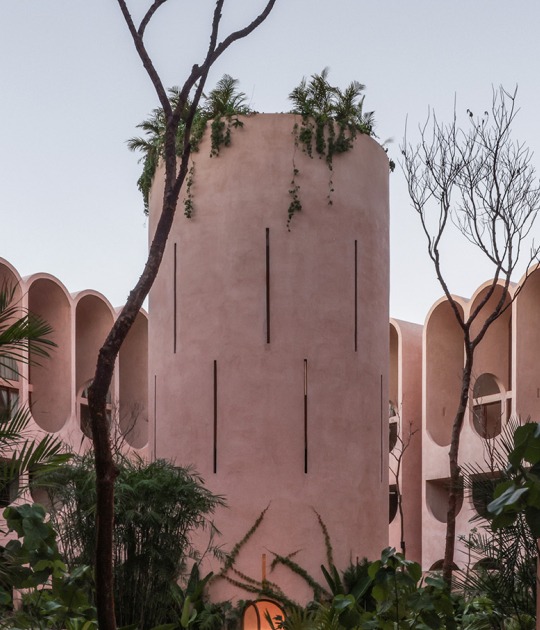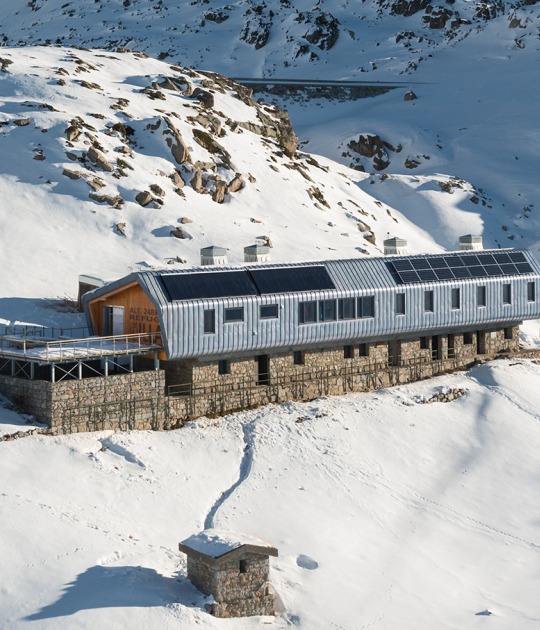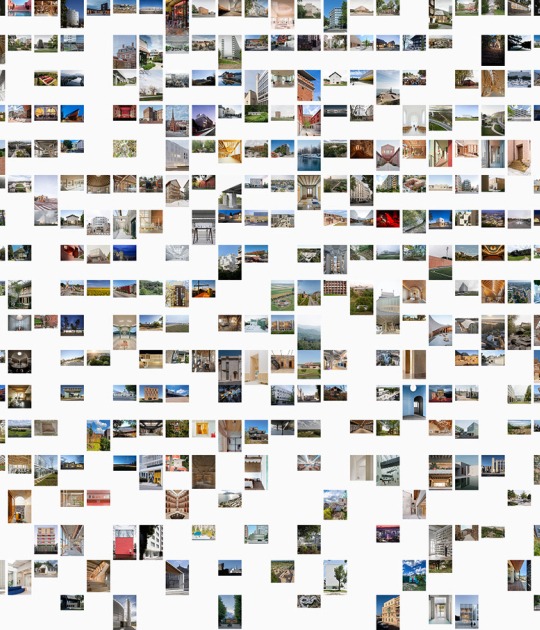Description of the project by DVVD studio
In this rapidly-changing district, a flagship for development policy in the north-east of the Ile-de-France, office blocks and residential buildings rub shoulders with a cinema, a nursing home, a nursery, a school, sports facilities, a multi-mode transport hub, a park and a shopping centre. This developmental diversity has dictated a fresh approach to the consideration of urban density, multi-functionality and compactness, further accentuated by an overall environmental approach which is consistent with the objectives of the climate action plan of the City of Paris.
Technical prowess
A technical project such as an overpass involves constraints which are not run-of-the-mill. The requirement for the least possible disturbance to vehicle traffic, for example, dictated an unusual installation procedure: once the pile-mounted abutments with their associated stairways were in place on either side, the central section, fully-fitted with its timber cladding and decking, was mounted on its permanent supports in a single night.
This arduous operation involved the deployment of a mobile crane of exceptionally high capacity, of a virtually unique type in Europe. This crane was positioned on the outer Boulevard Périphérique, fitted in record time with the numerous counterweights required to increase its load-bearing capacity, completed the lifting operation, then disappeared, allowing traffic to resume under a new crossing structure.
With the same idea of optimization in mind, the definition of the geometry of the overpass as a continuous arch, with no drops, and the design of its metal framework structure have been executed using sophisticated digital tools. The objective was to lighten its structure, optimize the budget, economize on raw materials and facilitate the lifting operation. The scheduling of the night-time lifting operation, on 14th May 2015, was planned minute-by-minute by the prime contractor and the project contractors. The installation of the walkway involved the simultaneous closure of carriageways on the inner and outer Boulevard Périphérique for three hours – an operation which had never been undertaken since its opening. This precision-engineering project was conceived in partnership with the services of the City of Paris and the Prefecture.
A natural and easy-to-use connecting structure
The Boulevard is crossed between the Rue Lounès Matoub – on the side of the 19th arrondissement of Paris – and the roadway which runs between the buildings of the Parc du Millénaire in Aubervilliers, now made more accessible by this new strategic axis. The Claude Bernard overpass launches itself from the south, extending from the pedestrianized square which accommodates the cinema, inviting the user to sail over the Périphérique and make a gentle landing to the north, in a logical extension of the angle formed by the recently-delivered services building. The proposed route is simple, direct and clear for all pedestrians, who will instinctively use the broad-stepped stairways on either side of the overpass, or the landscaped ramps which offer easier access and the straightforward movement of traffic in both directions, for persons with reduced mobility, bikes or pushchairs.
“Our primary intention was to create a strong and continuous visual link between the two sides of the ring road. This argued naturally in favour of an arched structure, which is suggestive of walking, crossing, and a leisurely stroll.”
Daniel Vaniche
Midway across, more generously-dimensioned plots provide rest areas and panoramic viewpoints. Once above the Boulevard Périphérique, the structure is conceived as a unifying space which accommodates bikes and pedestrians alike, in an arrangement where everyone can rub shoulders without impeding each other. The rising curve of the walkway is matched by a variation in the planar profile of the decking, which allows a natural connection to be formed between the streets at either end, ensuring the continuity of both the landscape and the route employed. And again in the interests of natural extension, the overpass is built to a street-level scale: its dimensions ensure its approachability for pedestrians, making it a key element in the network which enhances the flow of traffic in this area. This contextual evidence reinforces both the visual and the spatial proximity of the two sides of the Boulevard Périphérique.
“This is primarily an urban project, ahead of any design or architectural features. A continuation of the existing street provides a link in the territorial network, delivering spatial and visual continuity.”
Daniel Vaniche
Technology and artistry go hand in hand
In order to reduce the height of the structure and its impact upon the landscape, and in the interests of a more subtle outline, the load-bearing structure has been conceived as two variable-inertia three-dimensional arches, which are concealed in the protective housing which serves as a safety barrier. This solution enhances the inertia of the structural beams and reduces weight. Ultimately, this optimized structure has a weight of less than 270 tonnes, thereby saving raw materials, reducing the ecological impact of the structure and allowing the latter to be lifted by crane.
This design also allows the level of pedestrian traffic to be lowered by more than one metre. The structure is arranged on either side and not below the decking, resulting in a 20-metre ramp and six fewer steps on either side. Above all, a continuity in perspective is maintained from one side to the other, making the structure more urban in character and less imposing. The metal framework is concealed behind the protective timber cladding, which interacts with the light. Its transparency allows visual contact between pedestrians and drivers, while maintaining a degree of distance. This is a unique and identifiable design.
“The ramps are incorporated into the design of the linear forest, which enriches the district with a facility for an unexpected stroll.”
Bertrand Potel
“The slatted timber cladding delivers the initial reassurance of visual density, followed by the surprise of its curvature, and ultimately its open views over the Boulevard Périphérique.”
Bertrand Potel
A balcony over the city
The asymmetrical arrangement of the two structural arches breaks the monotony of the crossing, which is also highlighted by the pattern of the double-sided timber fretwork. At the centre of Boulevard Périphérique, the planks are taller and closer together, obstructing the harrowing views of the traffic 6 metres below.
Pedestrians are thus provided with an enclosed interior place, with greater protection from noise, speed or pollution. Conversely, in the interests of transverse views from the Boulevard Périphérique and its borders, the more widely-spaced planking becomes transparent: the overpass is disembodied. This combination of contrast and expansion multiplies the interplay of light, thereby contributing to the dynamism of the structure.
Through its successive filtering elements, the overpass opens up to the skies and the surrounding landscape, allowing the user to stroll, to stop at will, and enjoy a balcony over the city. An unprecedented panorama, further enhanced at twilight by the light fittings which are incorporated into the structure. Its geometry, design and cladding make the Claude Bernard overpass an essential and key feature of this site, in both functional and symbolic terms. A capital structure.
4 Questions to François Dagnaud, from the contracting authority SEMAVIP
How can you and would you define this overpass?
It is both a location – as a fine architectural object in its own right – and a link which interconnects and delivers a shared pulse to two districts of the city. In this mineral-dominated environment, the overpass provides a warm-hearted interlude. Apart from its aesthetic success, this is a physical emblem of the new face of the city, linking the modern districts of Paris and Seine-Saint-Denis.
What expected and unexpected repercussions have been experienced by the city since the commissioning of the overpass?
Opened during the 14th “Nuit Blanche” arts festival on 3rd October last, the overpass is entirely in keeping with the spirit which we are seeking to endow upon the Rosa Parks-Macdonald district: a 21st-century district, resolutely focused on innovation, and in complete harmony with its industrial past. It is surprising to see how quickly local residents and workers have adopted this new crossing. Initially, the primary flux of users of the overpass was observed in the Aubervilliers-Paris direction. The UGC cinema in particular has been one of the beneficiaries of this dynamic trend. It is a genuine convenience for city-dwellers to be able to come and go, as they discover this new and richly-promising district. Subsequently, the opening of the Rosa Parks station, the installation of the Ministry of Justice in particular, and the arrival of new residents in the Macdonald buildings saw a reversal in this movement. It is impressive to observe the stream of users leaving the new station, before sweeping through the station concourse and entering the Parc du Millénaire. The transformation of the district is the result of a successful venture, combining residential, business and transport factors.
What do you think of the proposal of the DVVD agency, and what were you expecting from this type of project?
The overpass proposed by the DVVD agency provides a landmark which is visible, but in keeping with the scale of streets and residents. The fact that it has not been conceived as a monumental structure has made a difference. It softens the break formed by the Boulevard Périphérique, delivering a continuous and elegant design. The signature of the DVVD agency is identifiable but not intrusive, providing a crossing which is accessible to all, functional and well-integrated in its urban environment.
What feedback have you received from residents?
Residents have been impressed by the overpass, and have enthusiastically adopted this structure. It has already become the pride of residents, features prominently in the blogs of local inhabitants and in urban planning forums. Everyday users, particularly workers, have a less emotional attitude to this object, and are more likely to appreciate its practicality. We have heard some comments on the lack of visibility of the treads, the neutral shades of which make them difficult to distinguish from the risers. Some adjustments will need to be made, but the overpass has definitely won over its public.
2 Questions for the contractor Segex
What were the technical challenges involved?
One of the particular features of this design is the dual curvature of the overpass, both in the plane section and in elevation (horizontal and vertical). This project also posed an operational challenge: the installation of the central section of the overpass, already fitted with its cladding, was completed in just a few hours, on the night of the 14th and 15th May 2015, in order to ensure the minimum disturbance to traffic on the Boulevard Périphérique, which was closed for the occasion, for the first time in 40 years. This operation involved the use of two mobile cranes of capacity of 700 tonnes. In total, the structure weighs over 270 tonnes.
How did collaboration with the DVVD agency proceed?
This was a full and comprehensive collaborative process, whether in the construction design phase or in the execution of the project. Our shared objective was invariably the ongoing identification of a solution – ever mindful of facilitating the work of the contractor and respecting the preferences of the architects – and working together for the achievement of a common goal.
3 Questions for the contractor Viry
How can you and would you define this overpass?
The overpass features surprising curvature and an austere profile. The continuity of its outlines makes it pleasant to approach and to cross. The weave of its cladding also provides transparency from the exterior, while maintaining a degree of opacity between the interior and the ring road. This timber cocoon of solid oak, a high-grade material, makes it possible for the user to forget that the ring road lies below, as they are crossing.
What have been the technical challenges for your company?
The key technical challenges have been of two types, but driven by a single imperative: the successful installation of an overpass with a 100-metre span, in a single night, over the busiest road route in Europe. The first challenge was the management of curvature, and the anticipation of the strain which would be sustained by the overpass upon installation. To this end, the structure was constructed in a reverse-bowed arrangement, and did not assume its final geometry until it was installed. The second challenge was the development of a connecting system which would permit both the rapid end-to-end connection of the structure and the accommodation of substantial loads. This has been achieved by the use of flanges and tie rods with a facility for angular and longitudinal adjustment.
What do you think of the proposal of the DVVD agency, and what were you expecting from this type of project?
The gauge of cladding used might have produced an overall structure of excessive solidity, but this is not the case. On the contrary, the structure is inviting to pedestrians, and protects the user from adverse external influences. This is certainly one of the finest pedestrian overpasses which I have had occasion to use.
